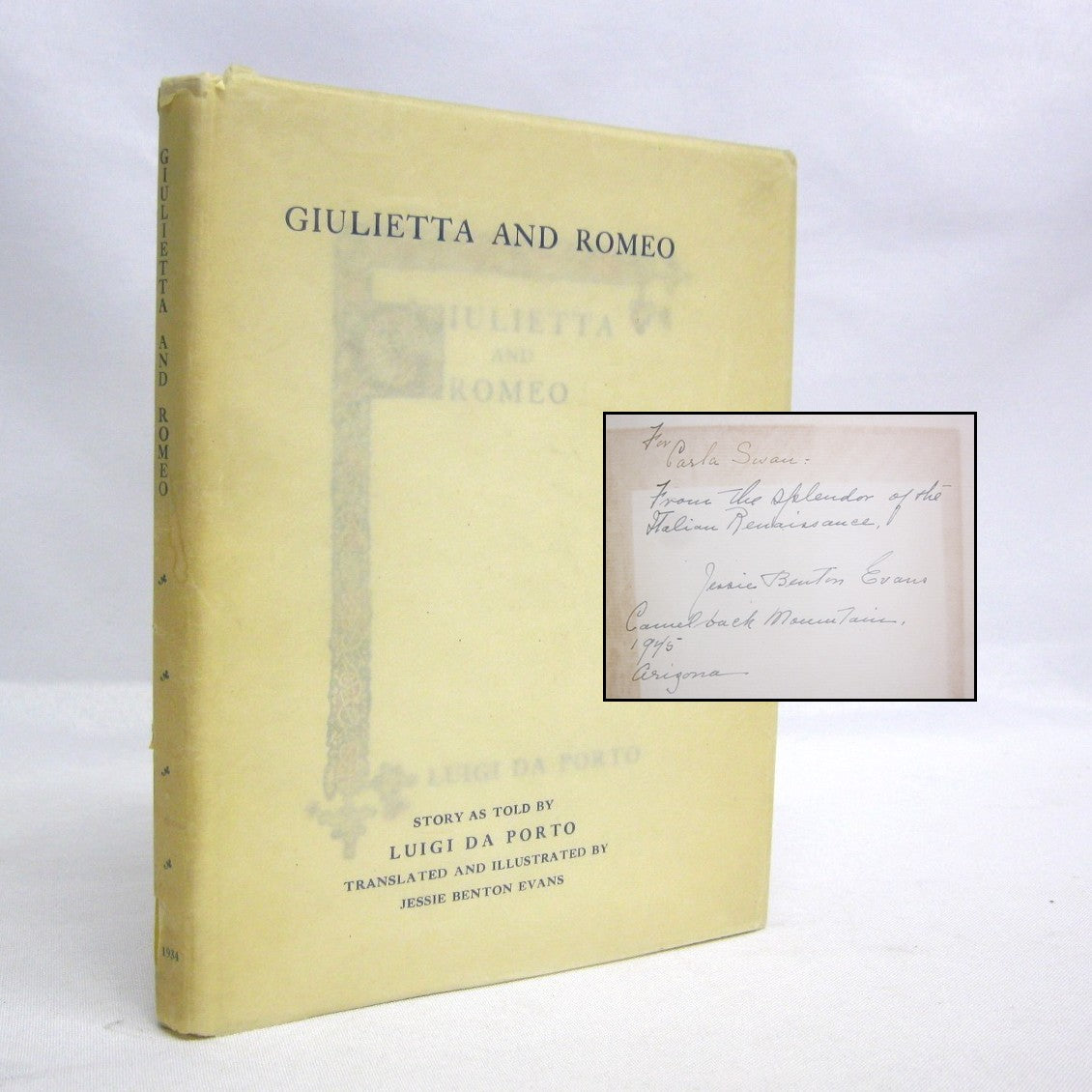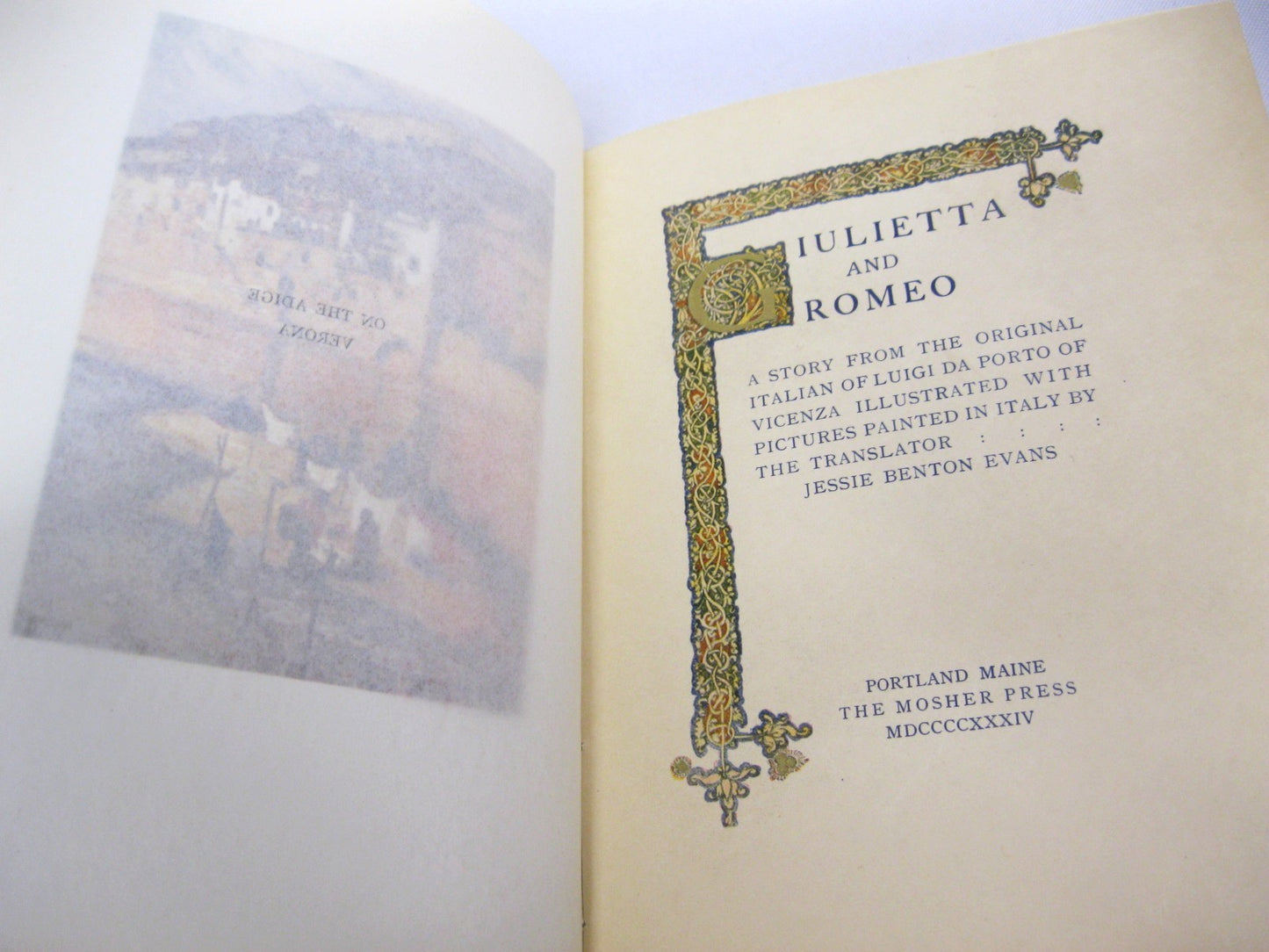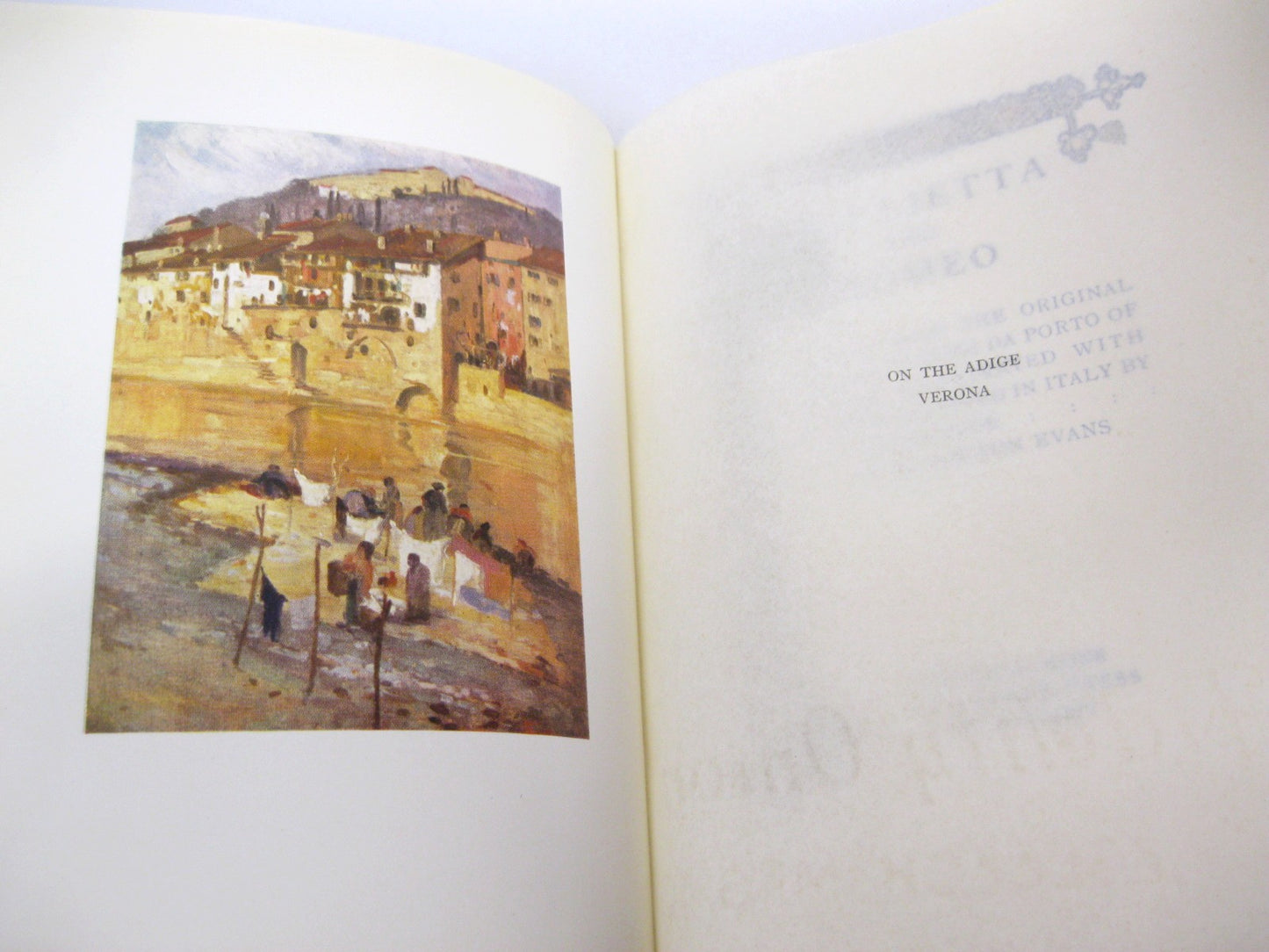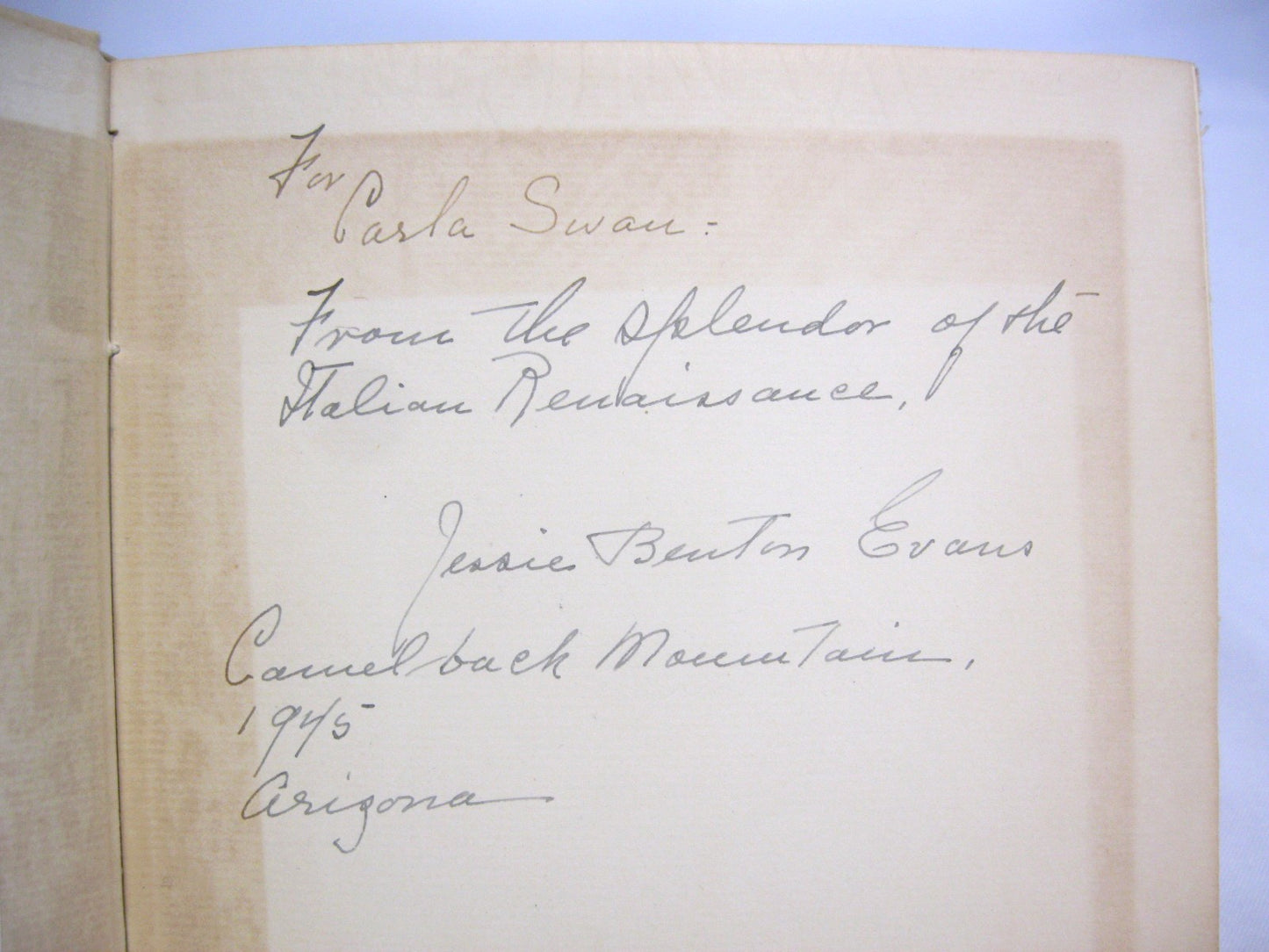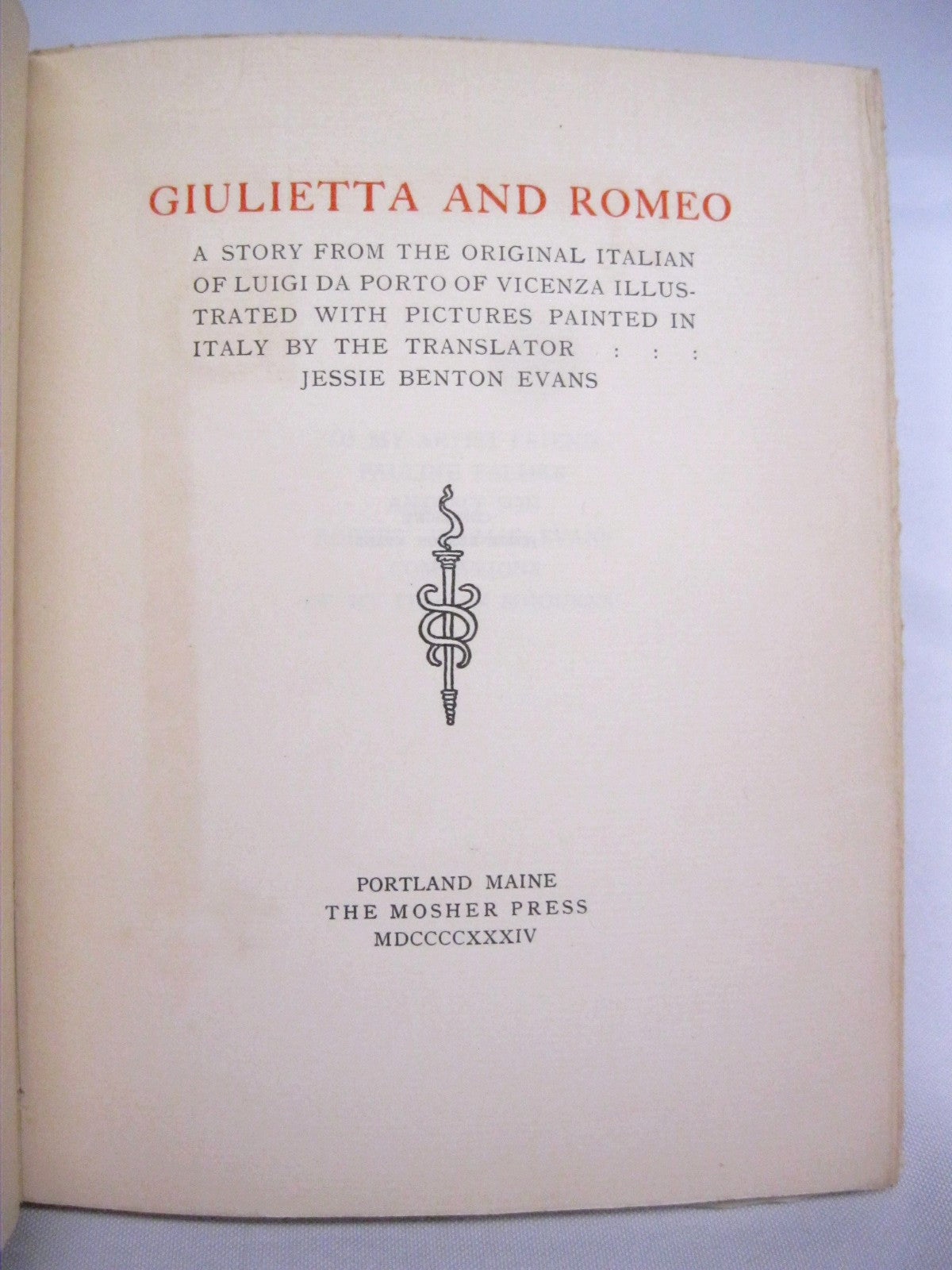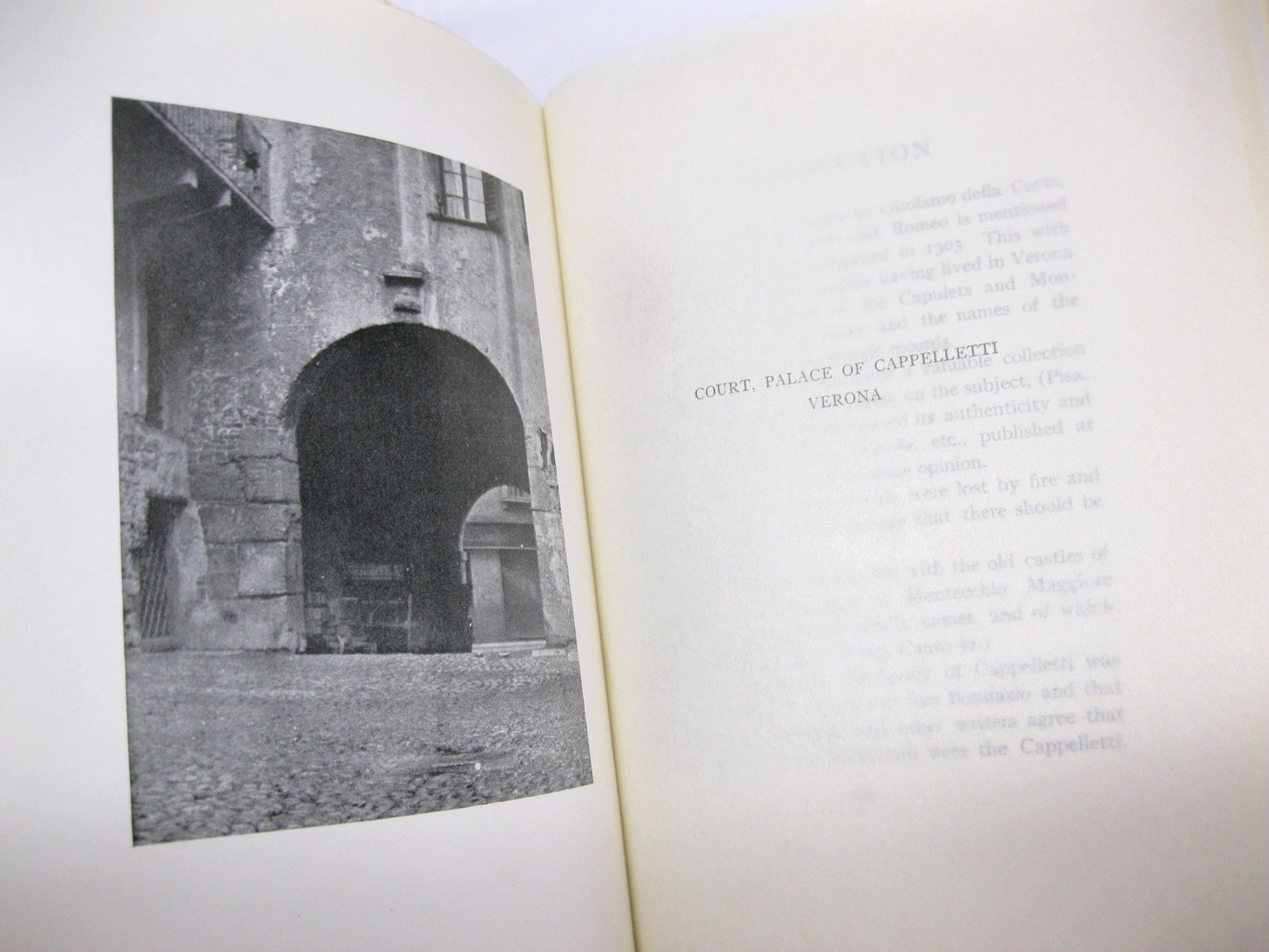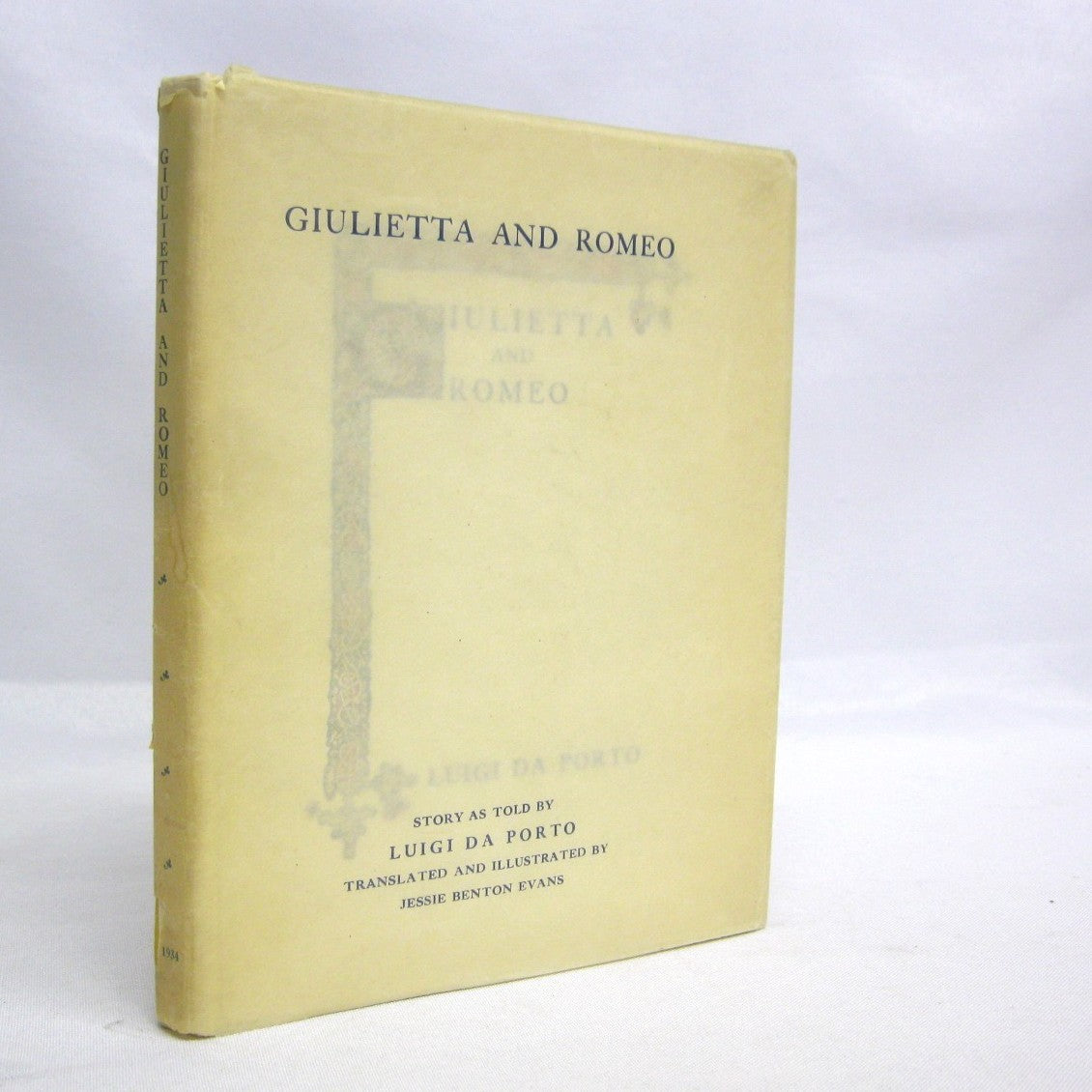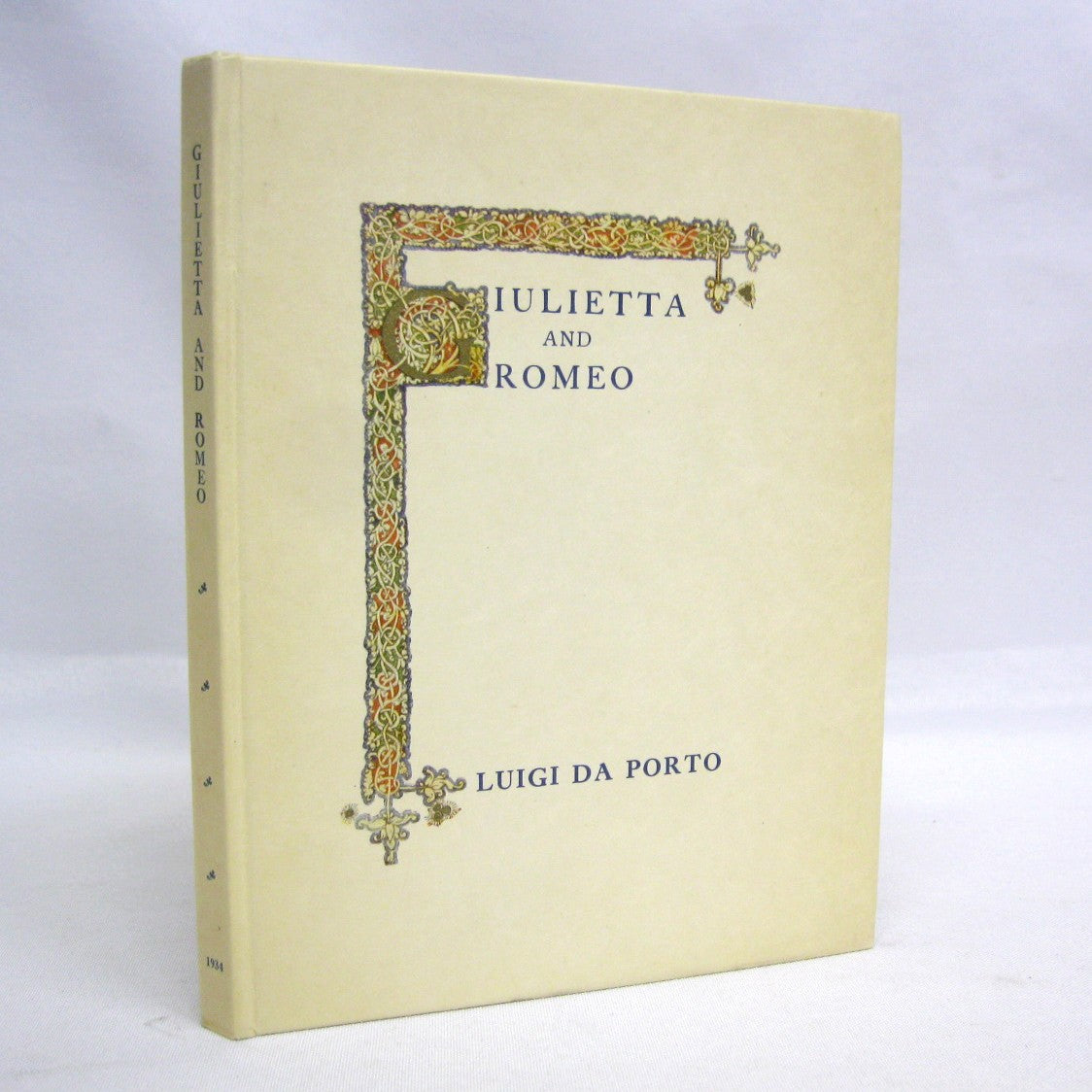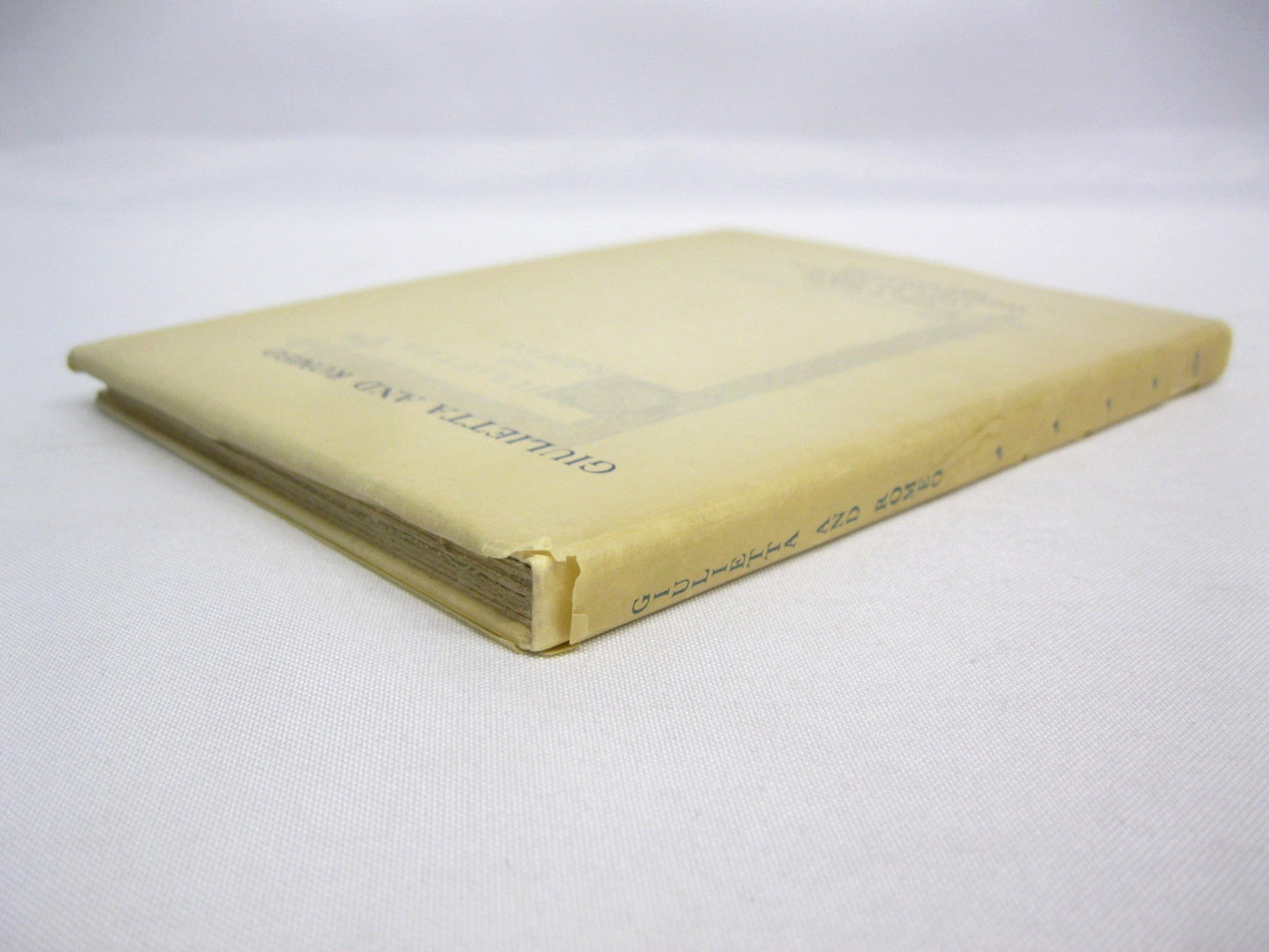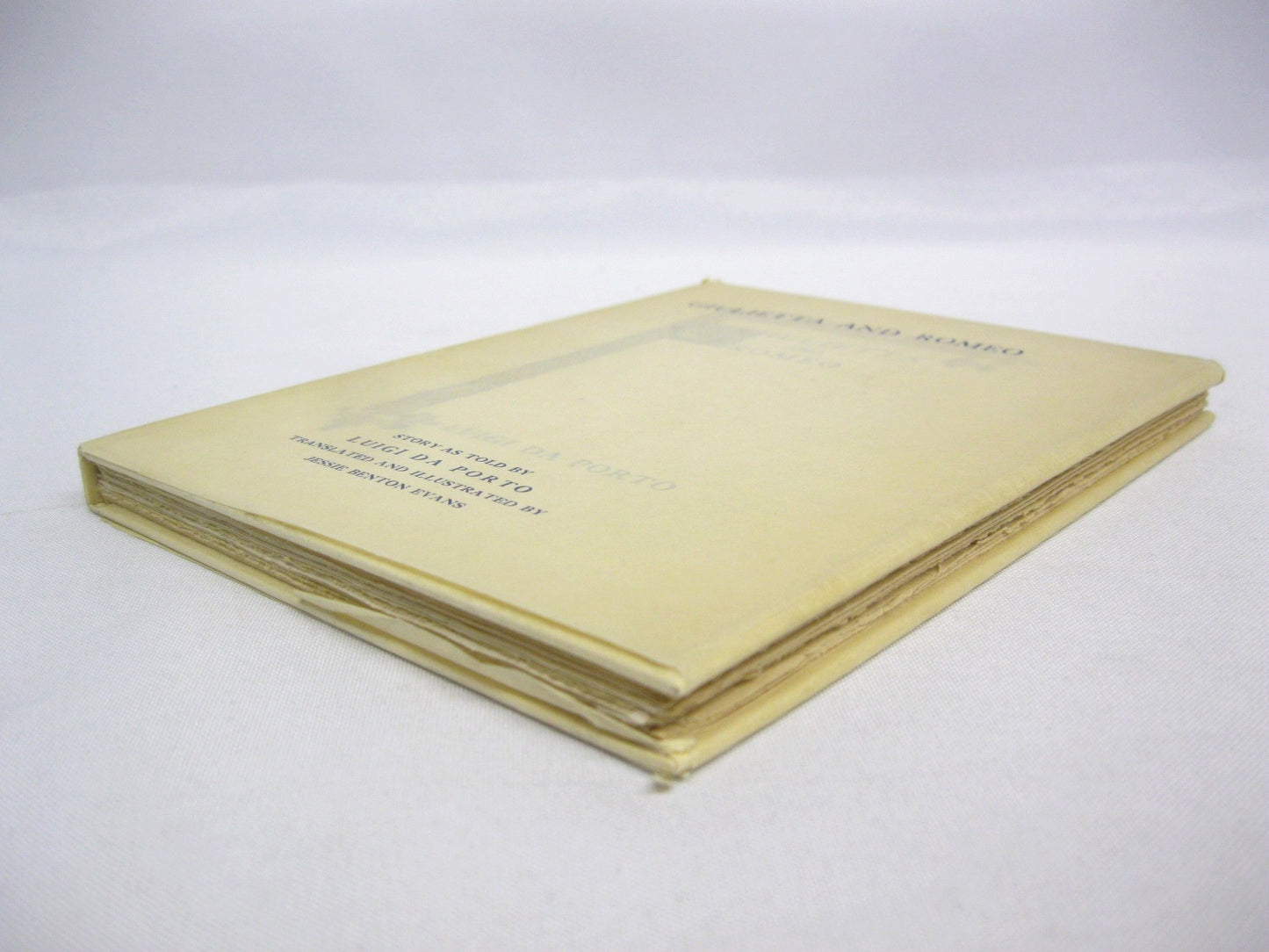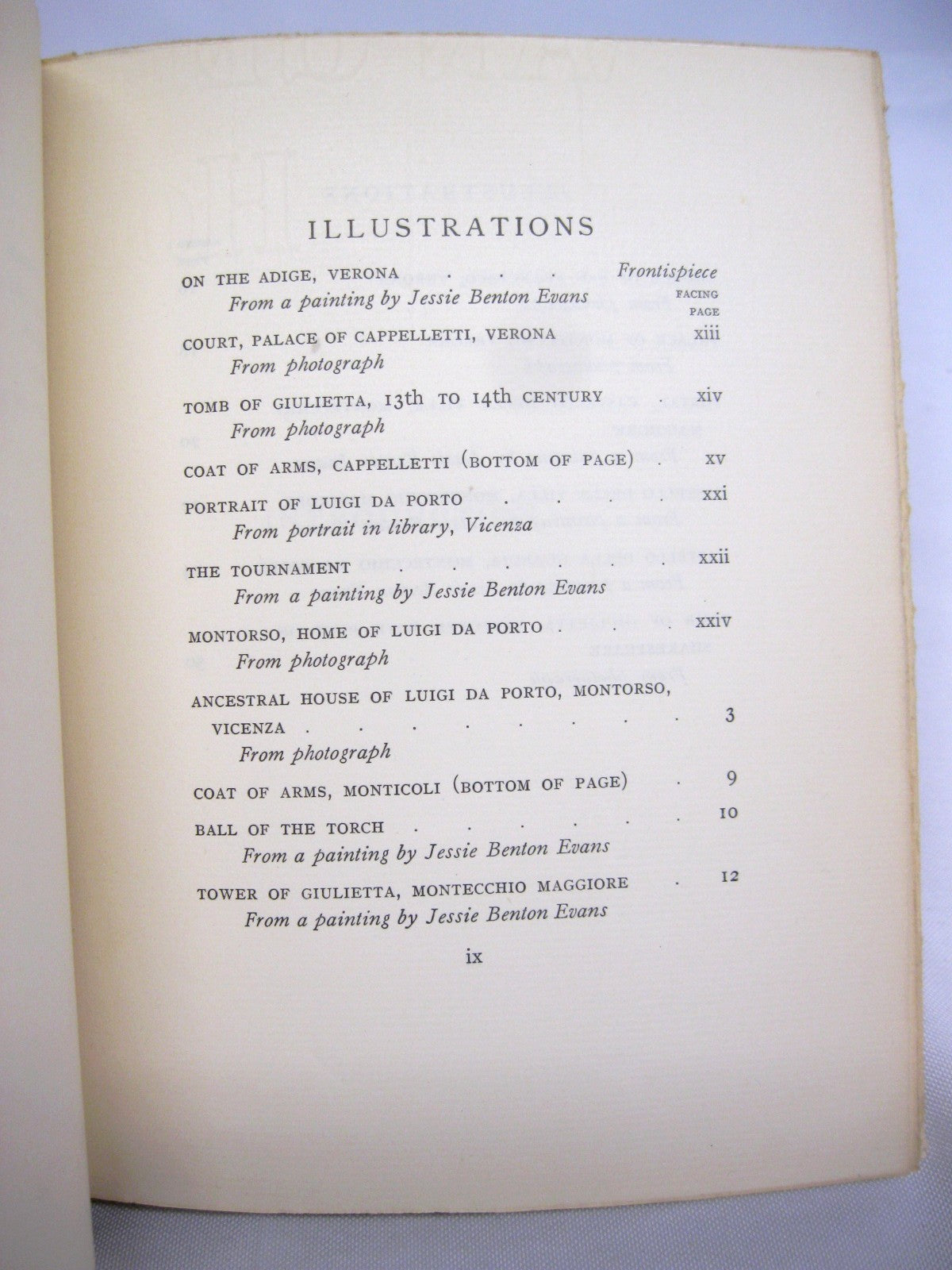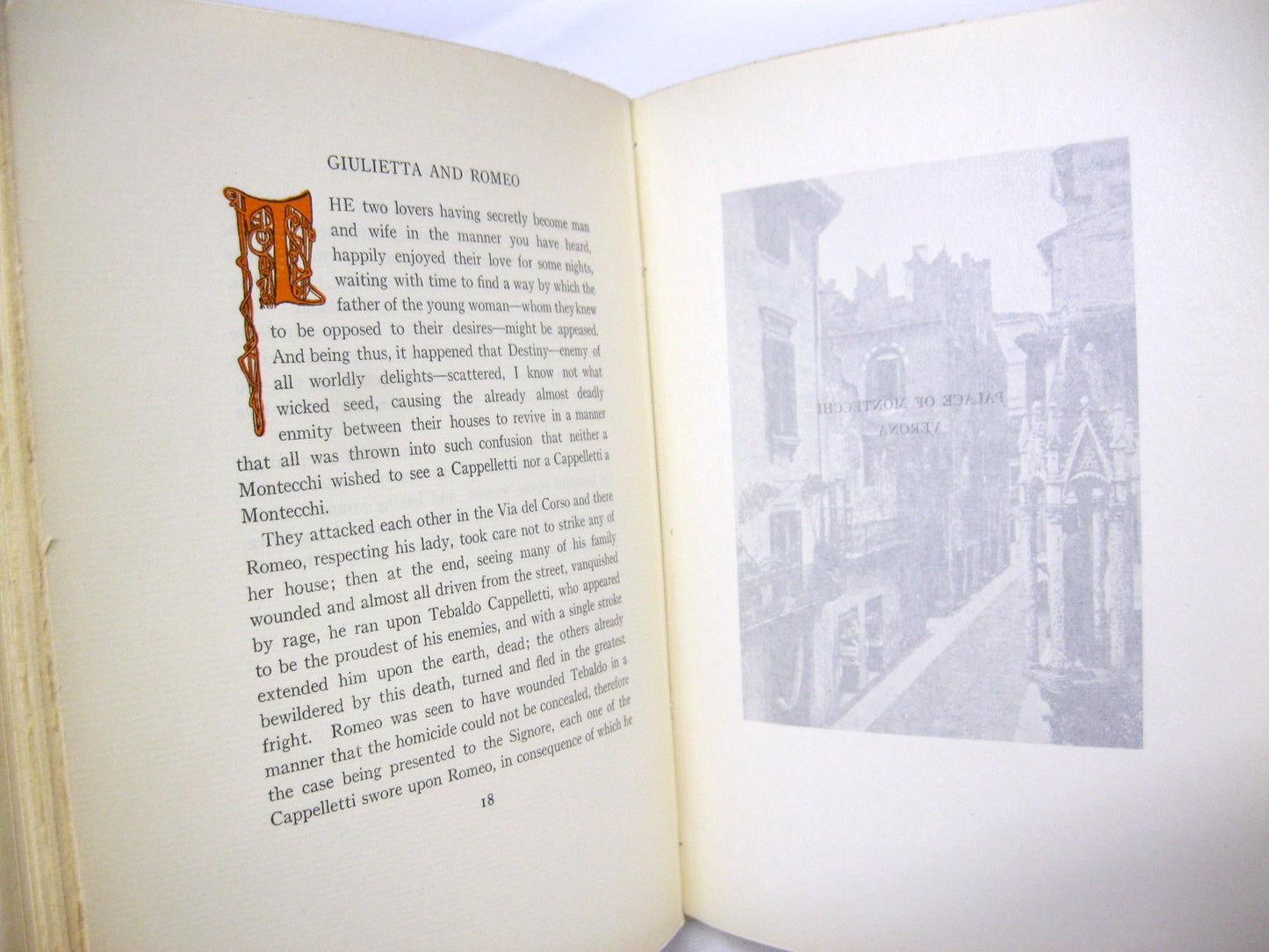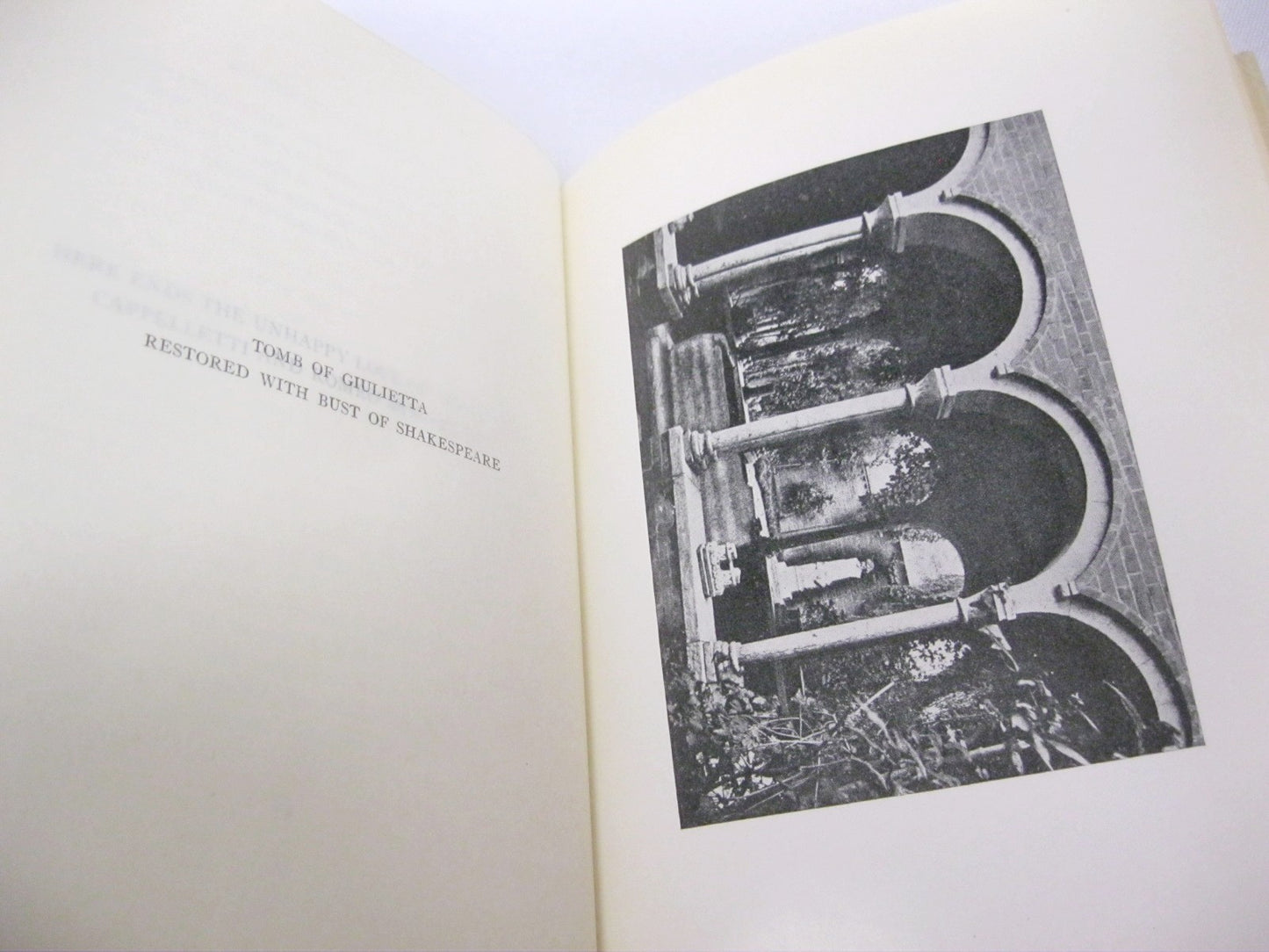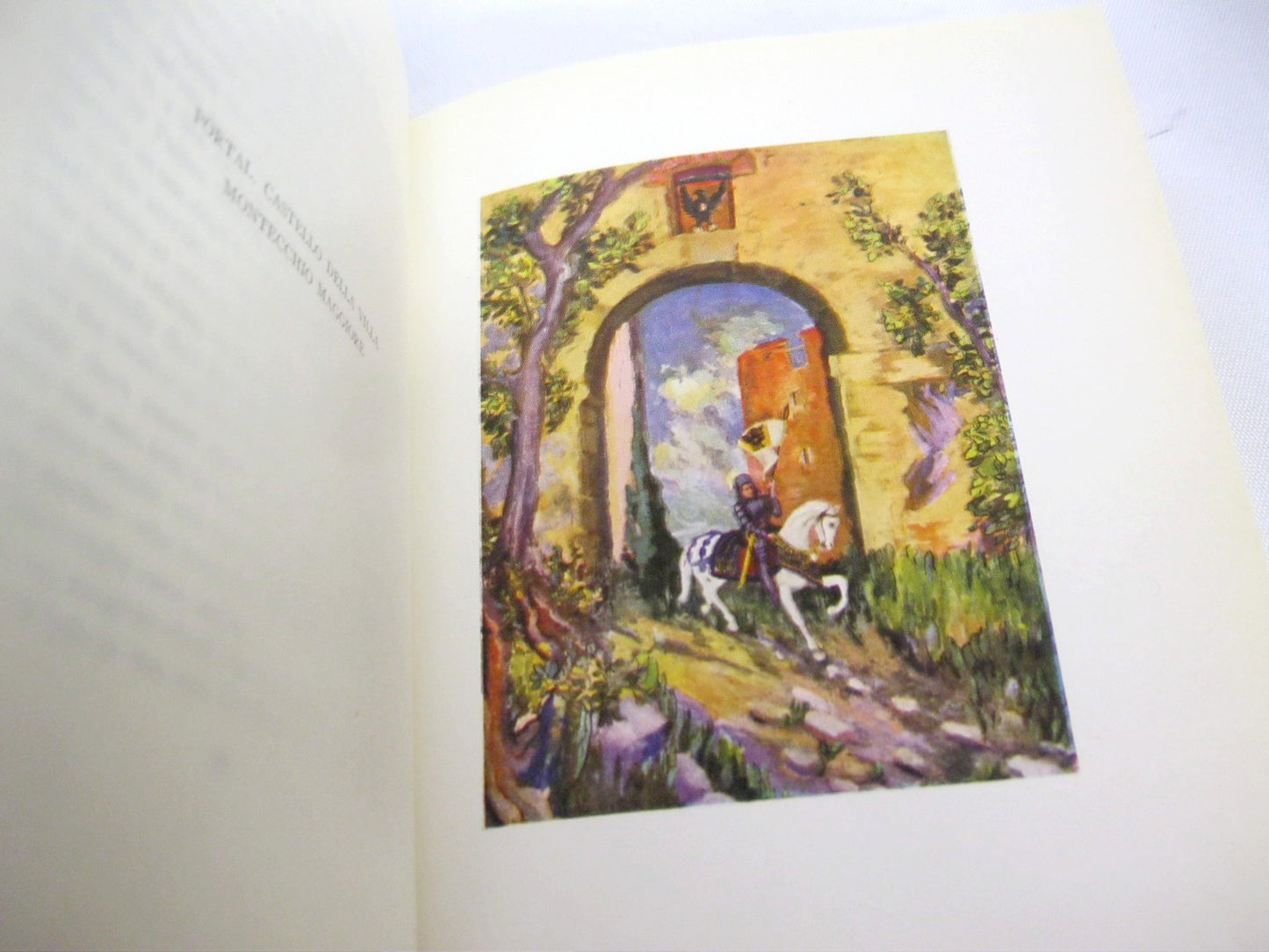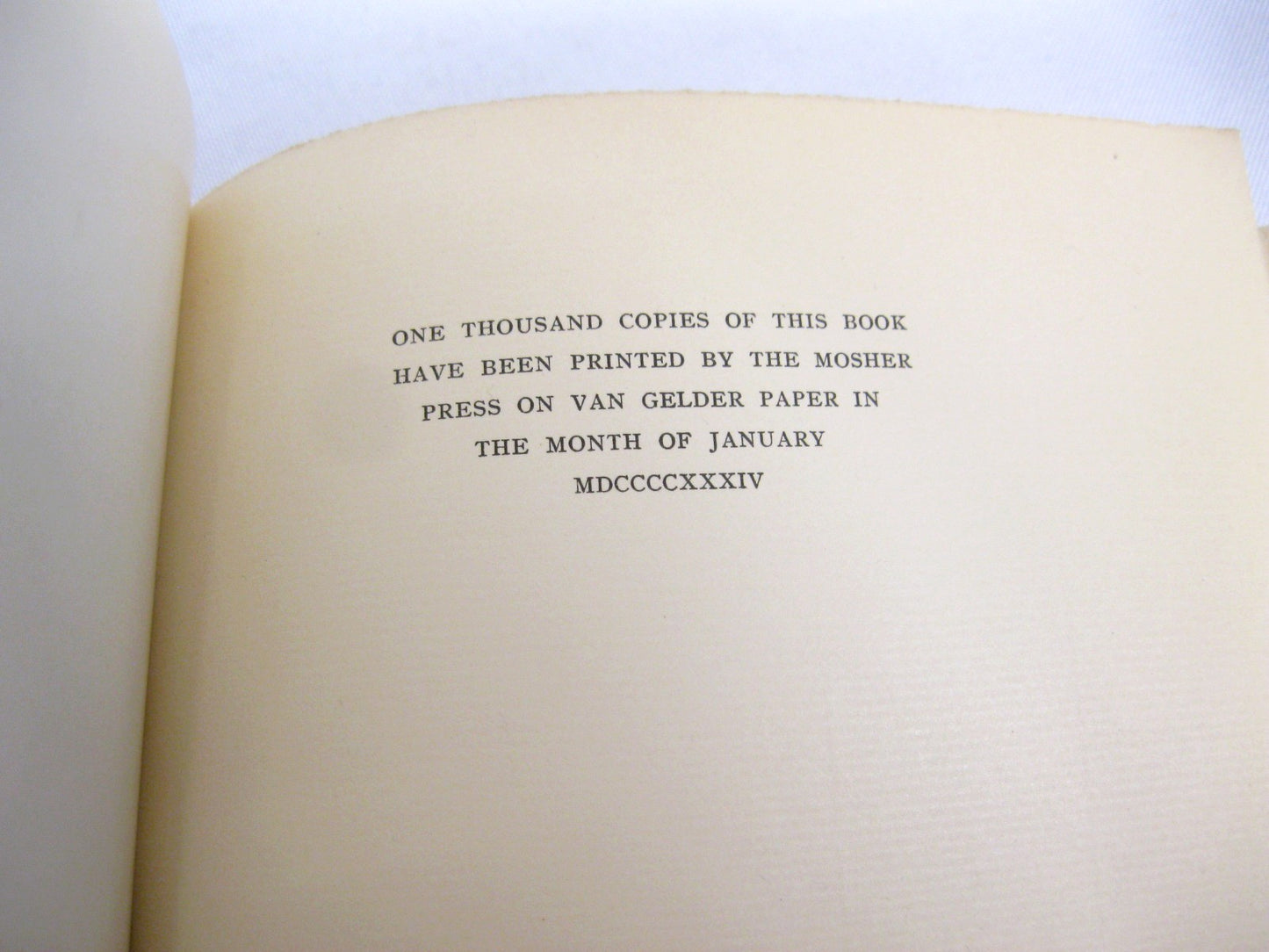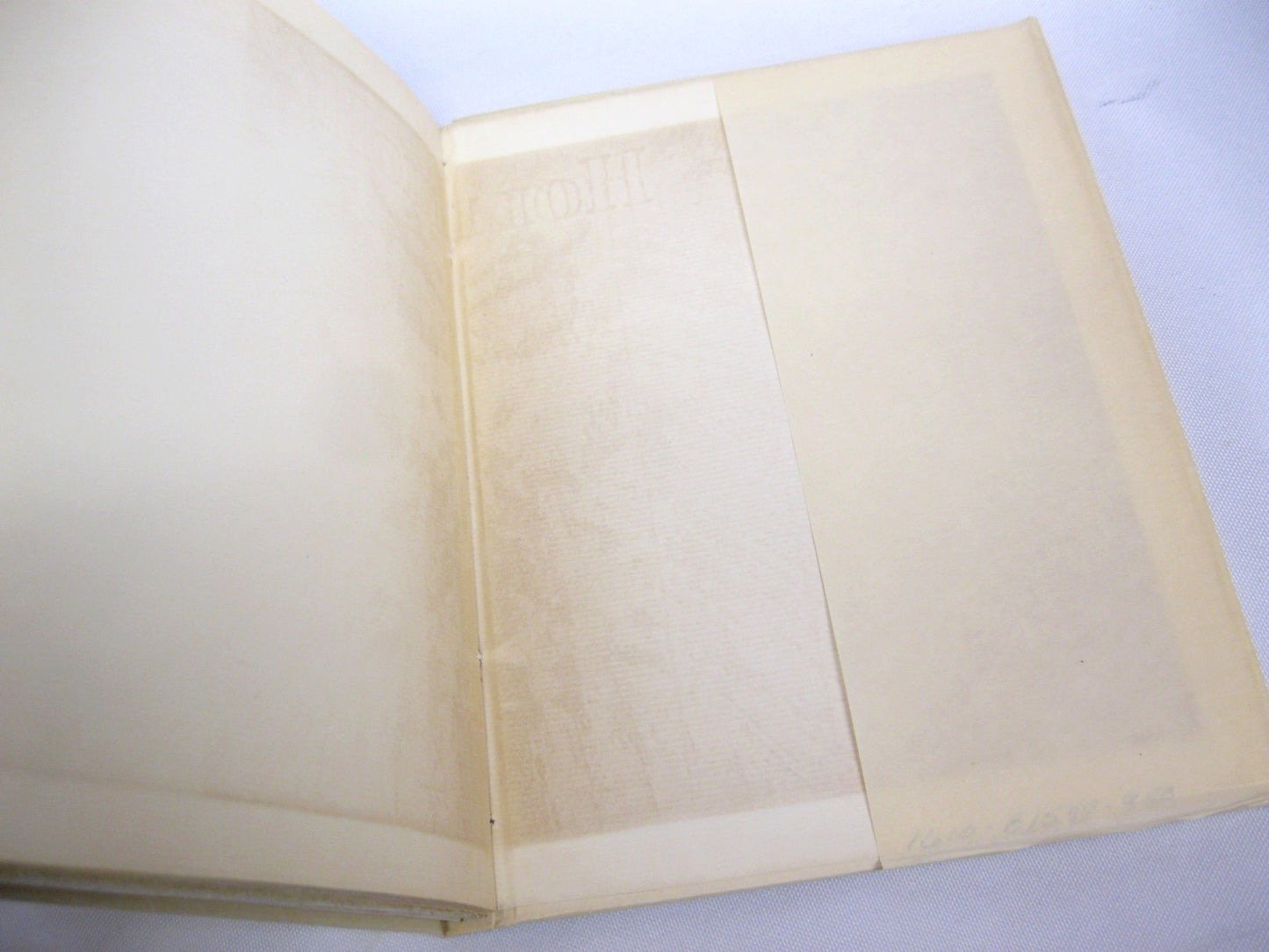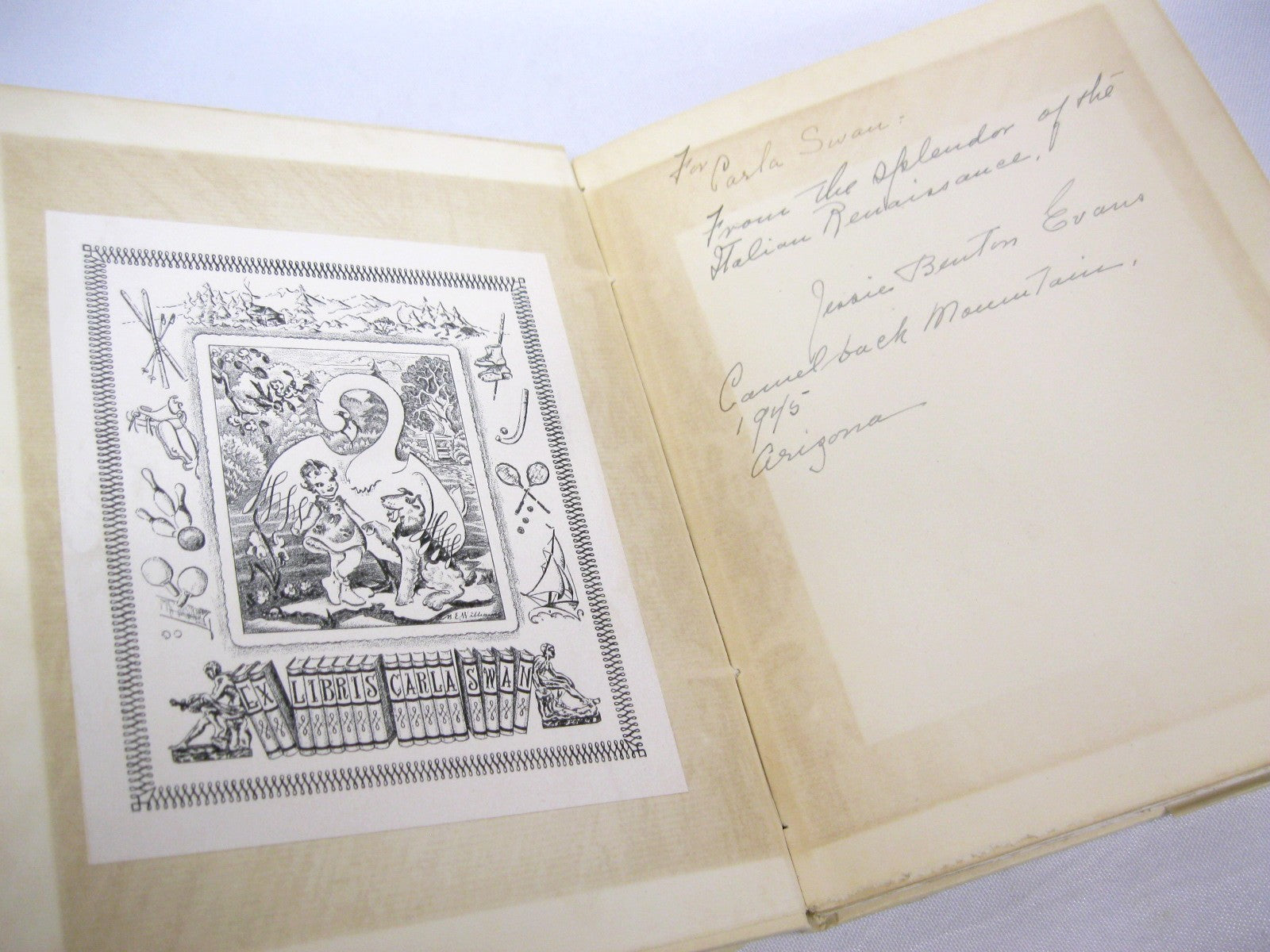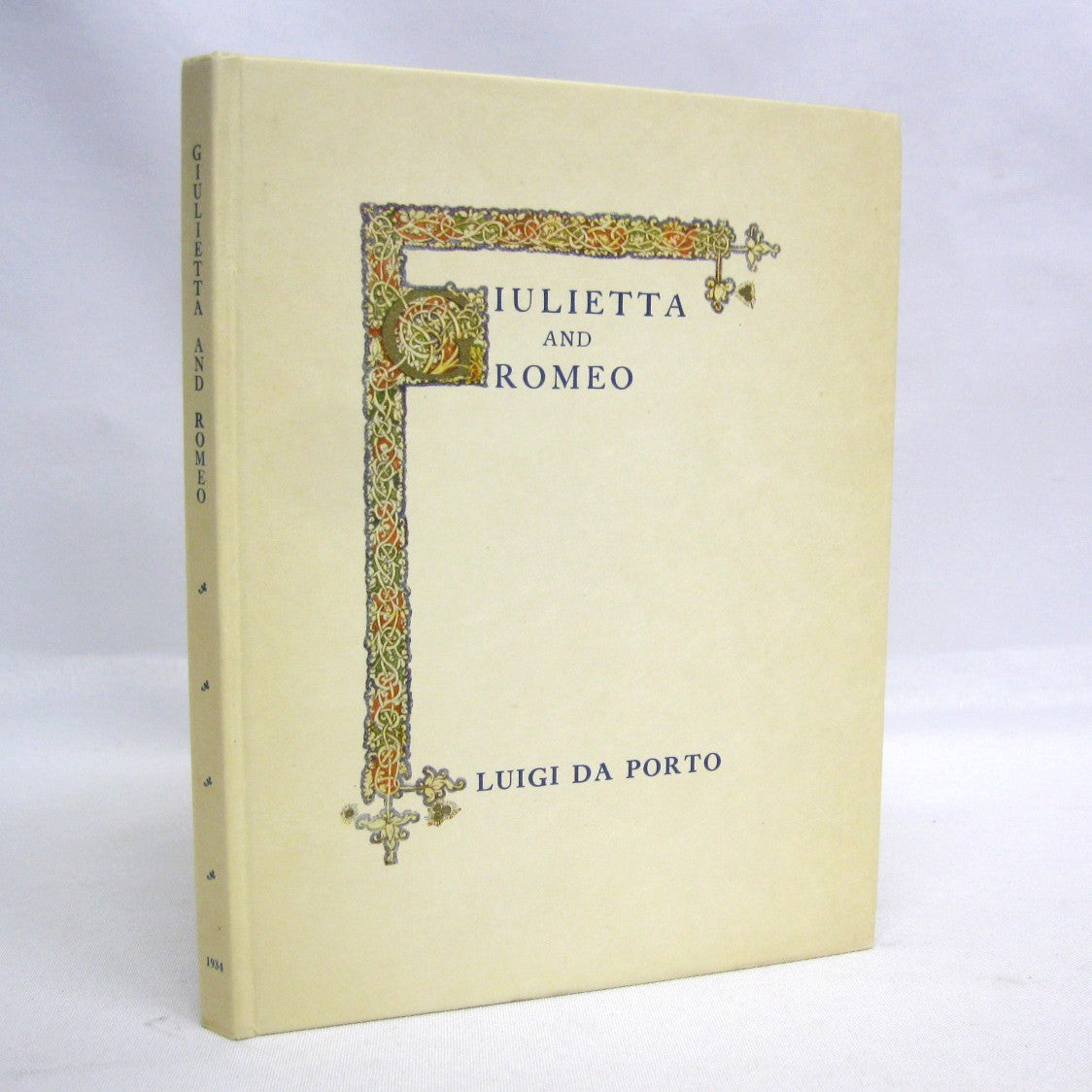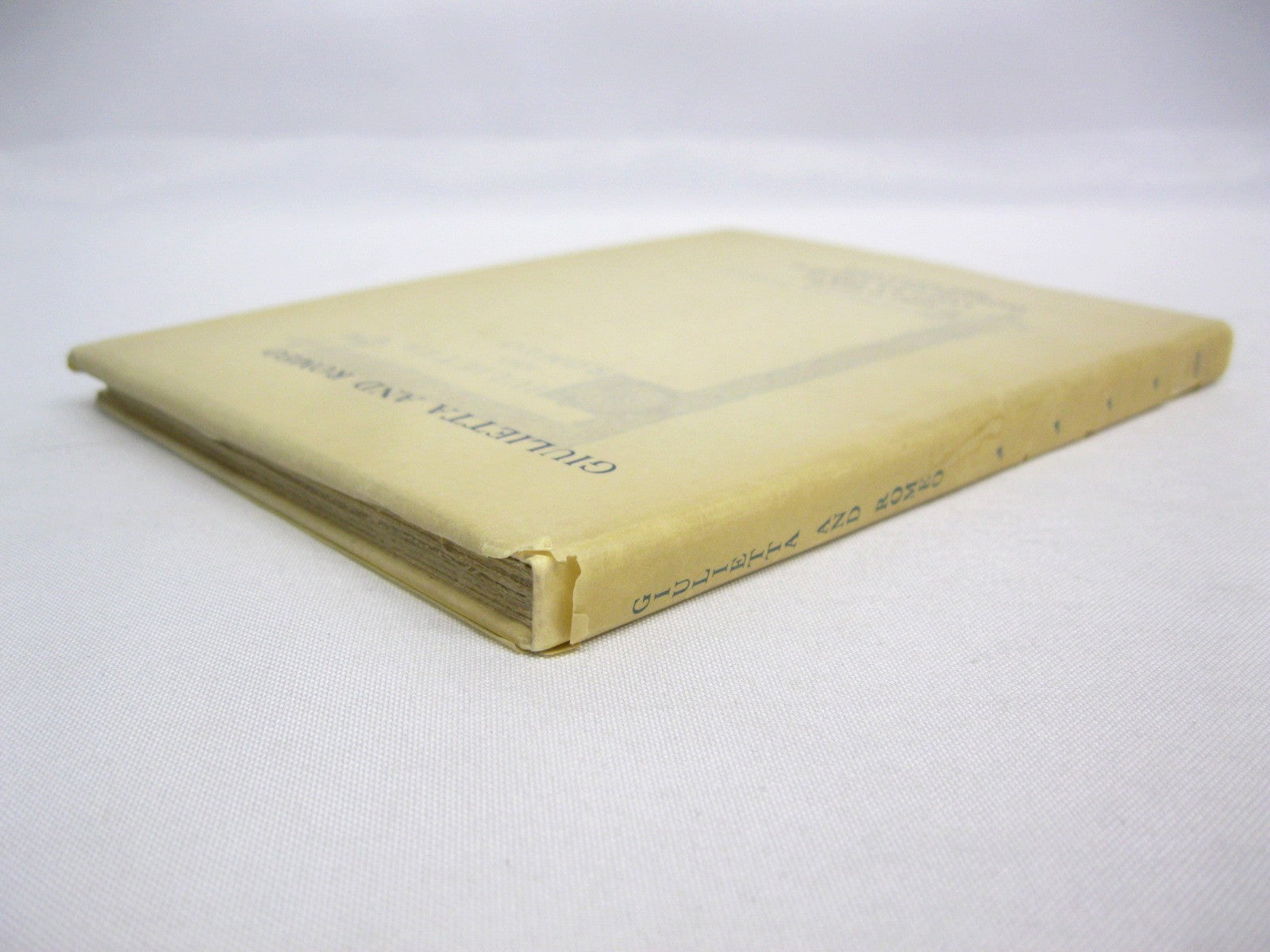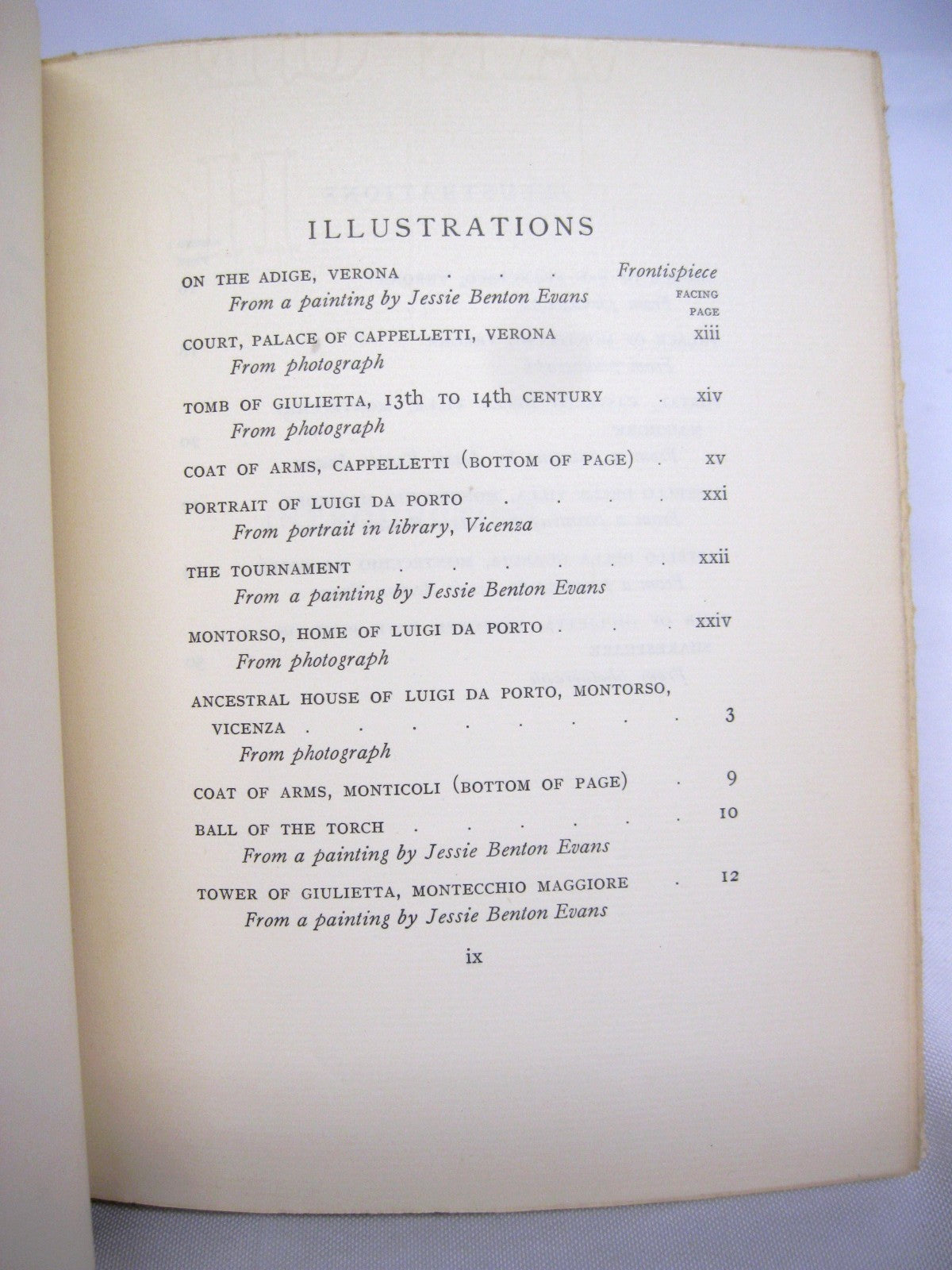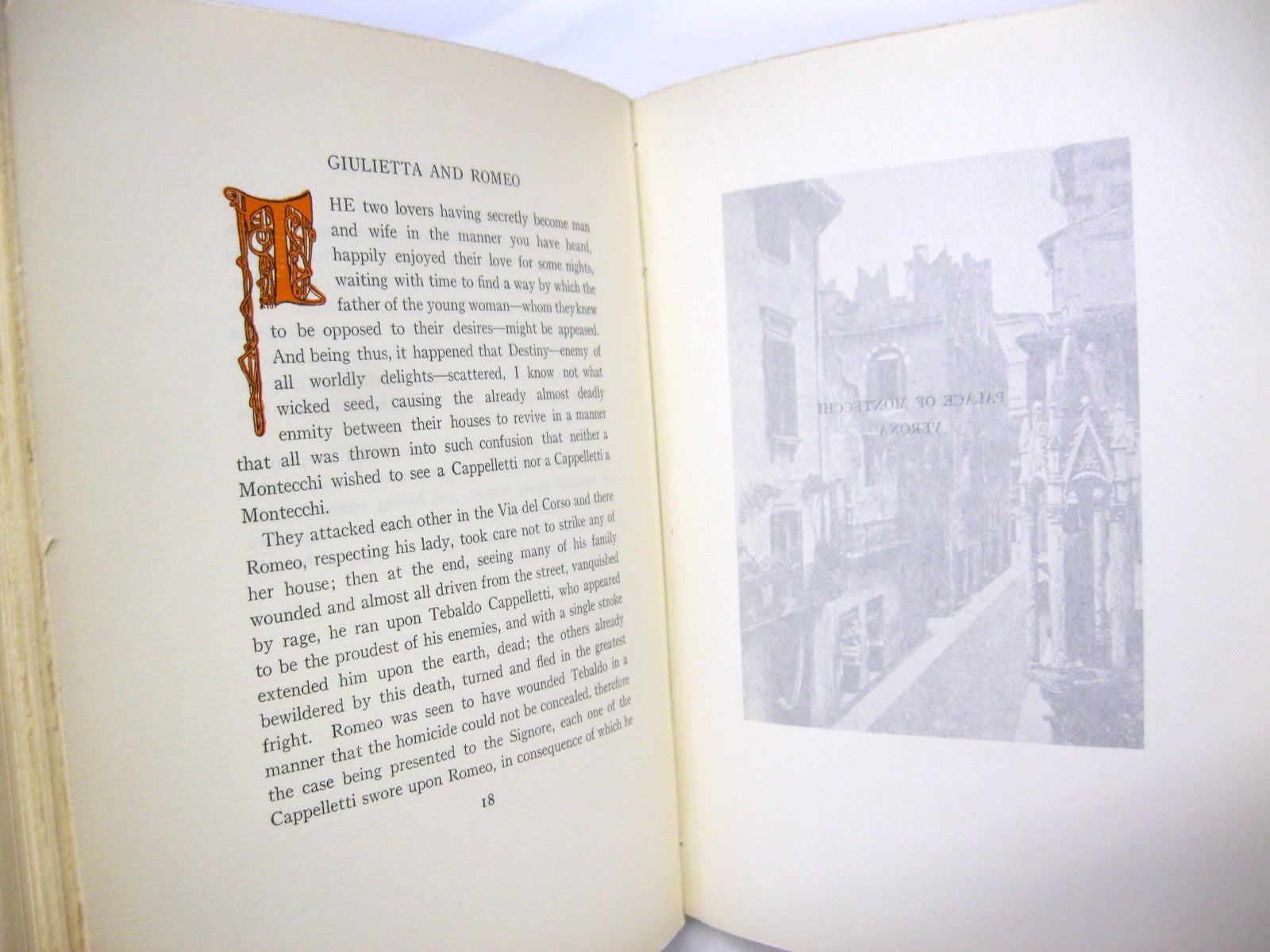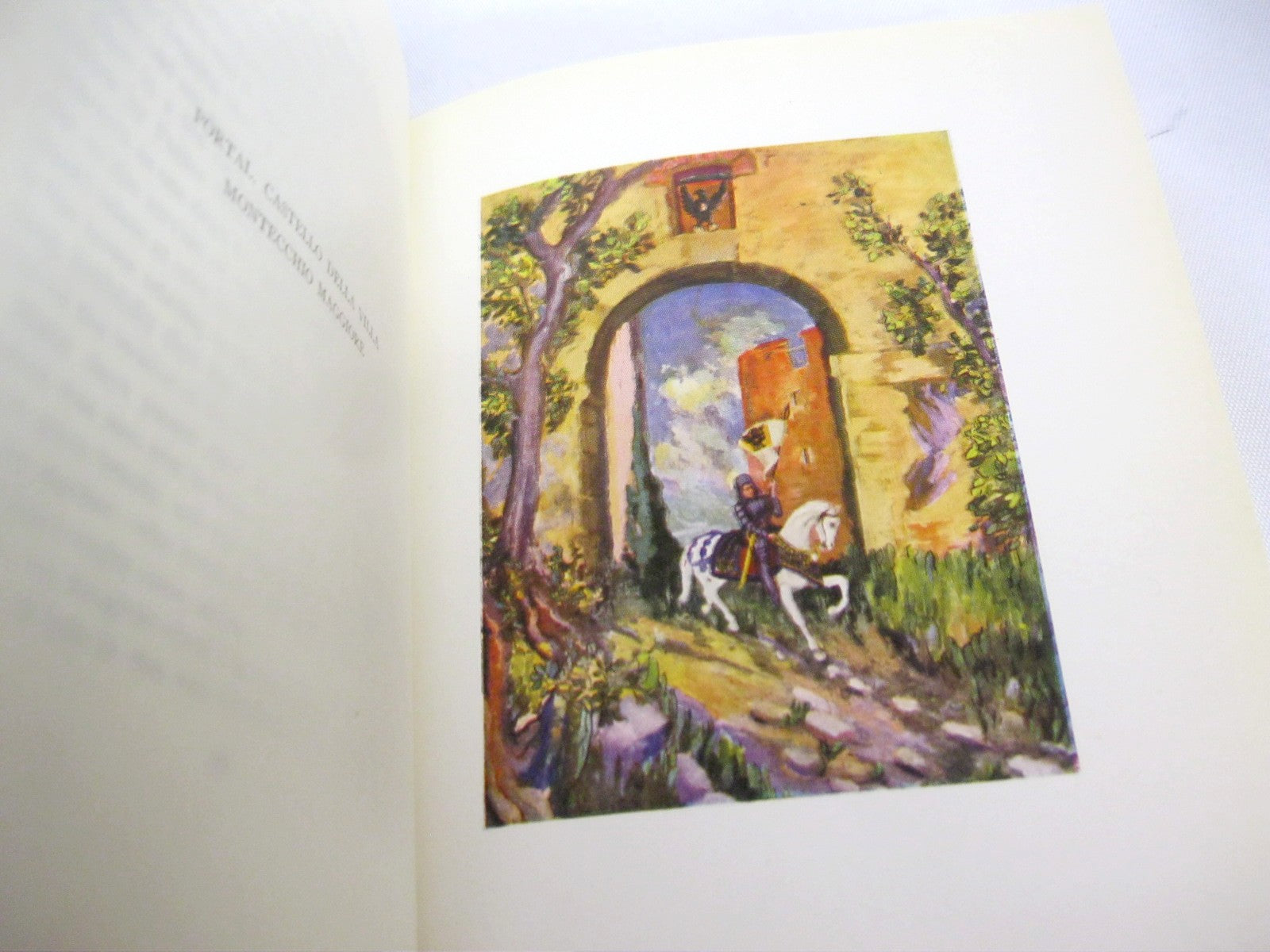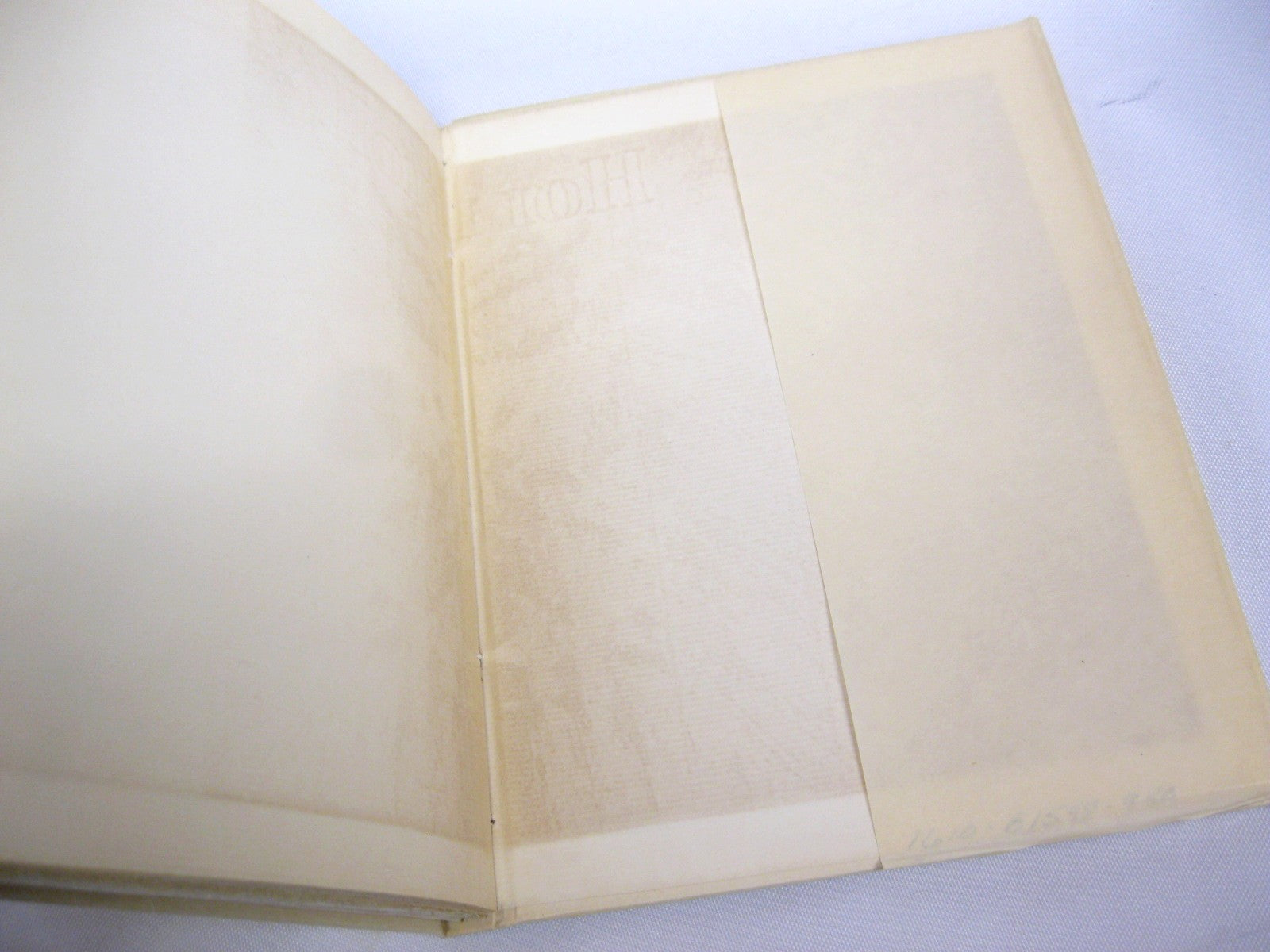Giulietta and Romeo by Luigi da Porto
Giulietta and Romeo by Luigi da Porto
Regular price
$74.98 USD
Regular price
Sale price
$74.98 USD
Unit price
per
Couldn't load pickup availability
Giulietta and Romeo
Story as told by Luigi da Porto of Vicenza
translated and illustrated with pictures painted in Italy by Jessie Benton Evans
Portland, Maine: The Mosher Press
January, 1934
Limited edition of 1000, printed on Van Gelder paper.
SIGNED and inscribed by Jessie Benton Evans on the ffep: "For Carla Swan: From the splendor of the Italian Renaissance, Jessie Benton Evans. Camelback Mountains, 1945, Arizona." On the inside cover facing the inscription is Carla Swan's large and very cute bookplate.
Condition: Hardcover; retains dust wrapper that has a couple very small chips in the spine, otherwise only minor shelf wear. Front endpapers somewhat darkened, otherwise the interior is clean and neat. Fully illustrated with black and white photographs as well as Evans's full color paintings; all retain their tissue guards.
wiki: "Luigi Da Porto (1485 in Vicenza – 10 May 1529) was an Italian writer and storiographer, better known as the author of the novel Novella novamente ritrovata with the story of Romeo and Juliet, later reprised by William Shakespeare for his famous drama.
Da Porto wrote the novel in his villa in Montorso Vicentino near Vicenza before June 1524, and dedicated it to his cousin Lucina Savorgnan. The novel was published posthumously and anonymously about 1531 in Venice with the title Historia novellamente ritrovata di due nobili amanti ("Newly found story of two noble lovers"). The origin of the story of the two unlucky lovers is disputed; however, Da Porto probably took the inspiration from a tale by Masuccio Salernitano called Mariotto e Ganozza, introducing many modern elements reprised by Shakespeare's drama.
Some inspiration may have stemmed from da Porto's own experiences: on 26 February 1511, the day before the Cruel Fat Thursday in Udine, he apparently fell in love with the sixteen-year-old (or older) Lucina Sarvognan, who enchanted a ball with her singing. However, at the time, the conflicts between and within Friulian clans were at a critical point. Da Porto was very close to his uncle Antonio Savorgnan [it] but unfortunately, Antonio's relationship with Lucina's guardian Girolamo Savorgnan was at a nadir. Years later, badly wounded and paralyzed from his battles, Luigi wrote the novella in his villa. Although the setting of the story is Verona, the inspiration for the idea of two warring families came from the two castles of Montecchio Maggiore, which he could see from his window in his villa. He dedicated the work to Lucina, who by then had become married to Francesco Savorgnan, another of Antonio's nephews."
Story as told by Luigi da Porto of Vicenza
translated and illustrated with pictures painted in Italy by Jessie Benton Evans
Portland, Maine: The Mosher Press
January, 1934
Limited edition of 1000, printed on Van Gelder paper.
SIGNED and inscribed by Jessie Benton Evans on the ffep: "For Carla Swan: From the splendor of the Italian Renaissance, Jessie Benton Evans. Camelback Mountains, 1945, Arizona." On the inside cover facing the inscription is Carla Swan's large and very cute bookplate.
Condition: Hardcover; retains dust wrapper that has a couple very small chips in the spine, otherwise only minor shelf wear. Front endpapers somewhat darkened, otherwise the interior is clean and neat. Fully illustrated with black and white photographs as well as Evans's full color paintings; all retain their tissue guards.
wiki: "Luigi Da Porto (1485 in Vicenza – 10 May 1529) was an Italian writer and storiographer, better known as the author of the novel Novella novamente ritrovata with the story of Romeo and Juliet, later reprised by William Shakespeare for his famous drama.
Da Porto wrote the novel in his villa in Montorso Vicentino near Vicenza before June 1524, and dedicated it to his cousin Lucina Savorgnan. The novel was published posthumously and anonymously about 1531 in Venice with the title Historia novellamente ritrovata di due nobili amanti ("Newly found story of two noble lovers"). The origin of the story of the two unlucky lovers is disputed; however, Da Porto probably took the inspiration from a tale by Masuccio Salernitano called Mariotto e Ganozza, introducing many modern elements reprised by Shakespeare's drama.
Some inspiration may have stemmed from da Porto's own experiences: on 26 February 1511, the day before the Cruel Fat Thursday in Udine, he apparently fell in love with the sixteen-year-old (or older) Lucina Sarvognan, who enchanted a ball with her singing. However, at the time, the conflicts between and within Friulian clans were at a critical point. Da Porto was very close to his uncle Antonio Savorgnan [it] but unfortunately, Antonio's relationship with Lucina's guardian Girolamo Savorgnan was at a nadir. Years later, badly wounded and paralyzed from his battles, Luigi wrote the novella in his villa. Although the setting of the story is Verona, the inspiration for the idea of two warring families came from the two castles of Montecchio Maggiore, which he could see from his window in his villa. He dedicated the work to Lucina, who by then had become married to Francesco Savorgnan, another of Antonio's nephews."
